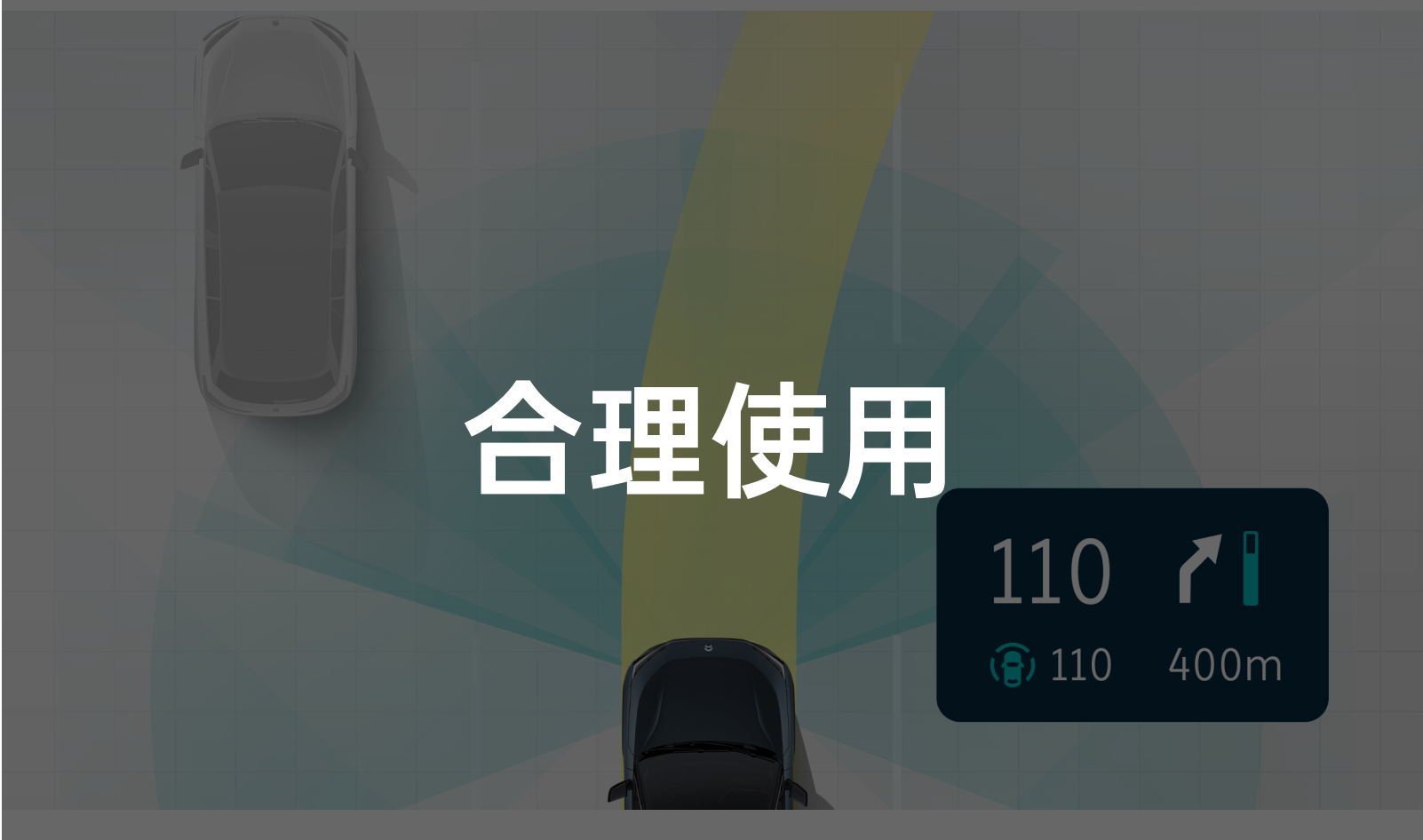On August 14th, a public account called “Mei Yi Hao” released an obituary, mentioning that the founder of the brand, Mr. Lin Qinqin, passed away on August 12th while driving a NIO ES8 with the “NOP Navigation Status” function enabled on the Hanjiang section of the Shenhai Expressway due to a car accident.
According to Mr. Zheng, a friend of Mr. Lin Qinqin, the accident occurred because the vehicle could not identify the high-speed maintenance vehicle moving slowly ahead while in NOP mode on the highway, resulting in a rear-end collision.
The incident immediately became a hot topic online and sparked discussions about NIO and autonomous driving. NIO officially responded that “NOP Navigation Assistance is not autonomous driving, and we will share investigation results with the public in due course.”
Today, Sina Technology reported that the attorney representing Mr. Lin Qinqin’s family revealed that NIO’s technical staff had contacted the accident vehicle without the permission of the traffic police, and if the staff tampered with or destroyed the vehicle’s data, NIO would bear full legal responsibility.
On the other hand, Mr. Zheng posted on the NIO app that on August 13th, his family and the police requested NIO to provide some vehicle travel data, and NIO sent an engineer to participate in the data retrieval that day.
Subsequently, Mr. Zheng also disclosed the driving data at the time of the accident: the last driving distance of the vehicle owner was 85 kilometers at 1:17 pm on August 12th, and the total assisted driving distance was 72 kilometers, of which the NOP Navigation Assistance accounted for 68 kilometers, or 80% of the total journey.
Taking into account that NIO’s engineers at the Shanghai Headquarters had already confirmed with the NIO Fujian Minnan District Manager over the phone that the vehicle driven by Mr. Lin Qinqin was indeed in NOP mode at the time of the accident, information regarding the “NOP Navigation Status” was added to the obituary.
On the evening the obituary was released, NIO officials had a brief meeting with the deceased’s family. A screenshot of the chat was also shared.“`
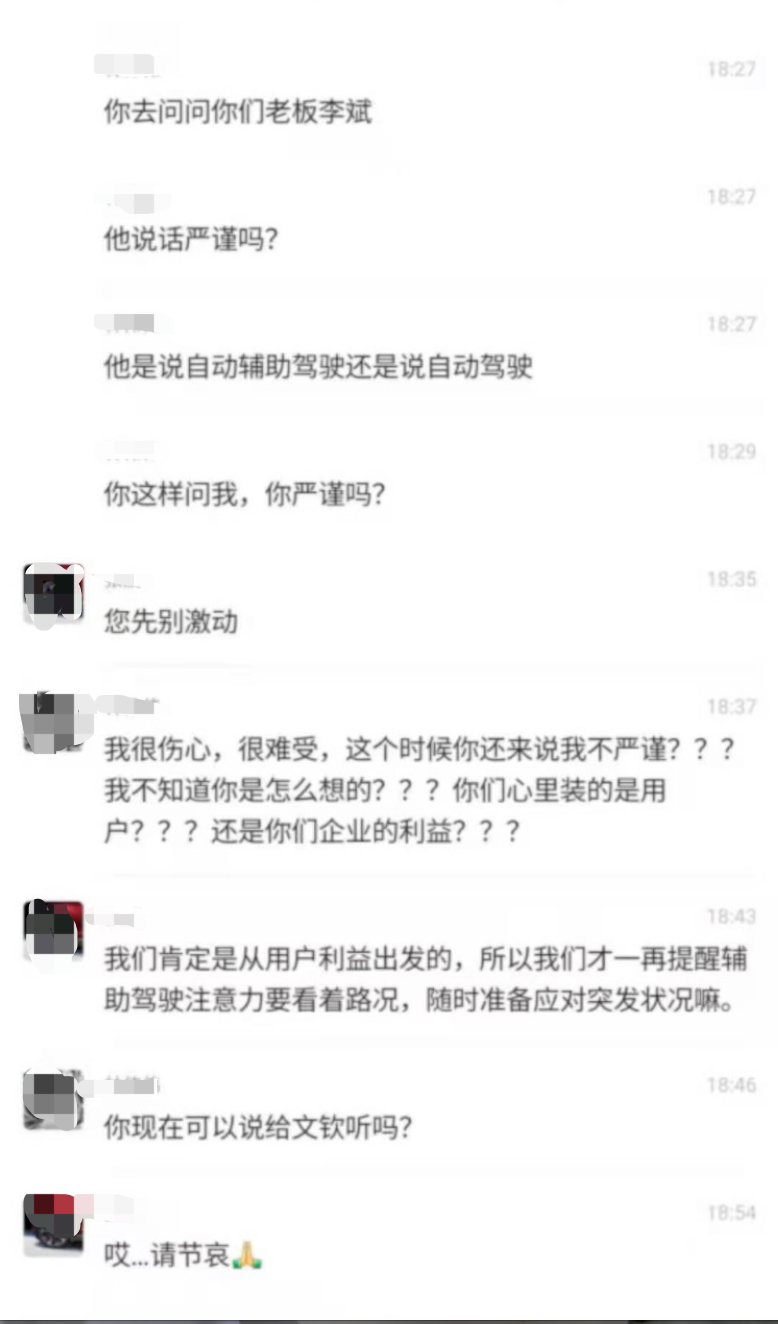
Due to this reason, Mr. Zheng called for help in the WeChat group chat, hoping that friends could help to push the incident onto the hot search of Weibo and put pressure on NIO. So far, the cause and effect of this matter are quite clear.
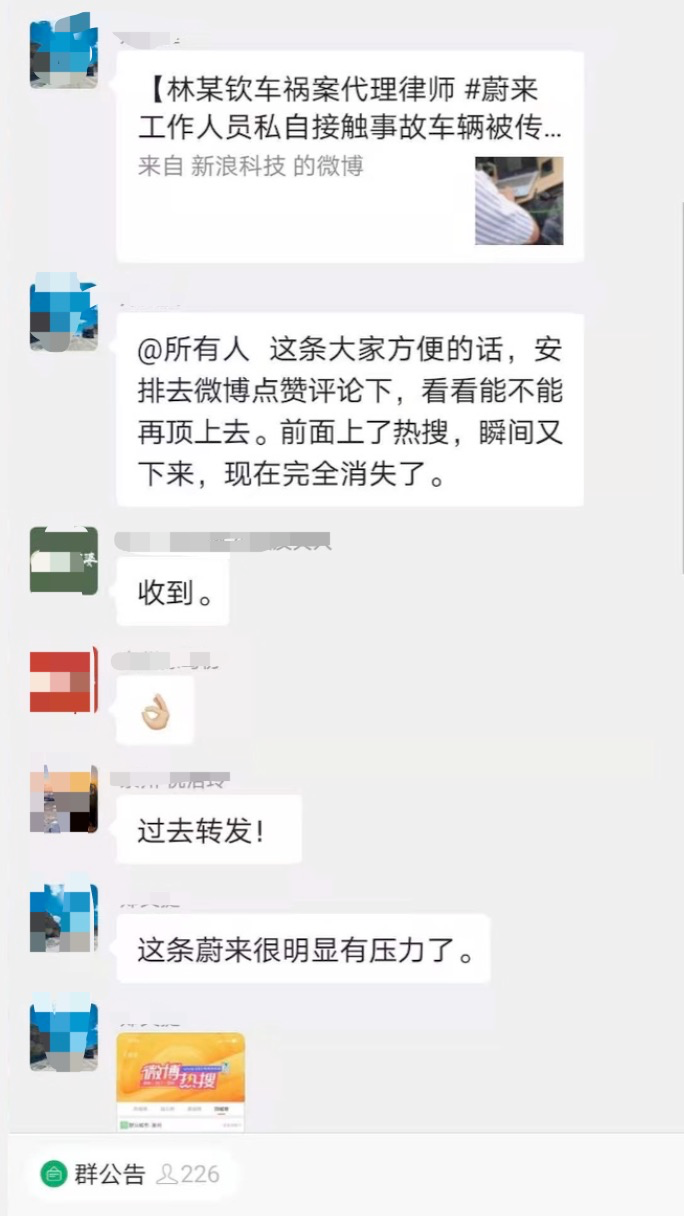
At 18:15 today, NIO also issued its own statement.

To be frank, the tragic accident is not what anyone wants to see as an outcome. However, it is worth debating whether the blame for this matter should be put on car manufacturers or not.
Is this autonomous driving?
Currently, most of our cars are equipped with L2 level assisted driving. Of course, many manufacturers have also “created” new concepts, such as L2+, L2.9, and so on. However, for those of us who have long-term exposure to assisted driving, we believe that there are two sets of evaluation criteria: (1) whether human drivers need to participate in the driving process, and (2) whether the responsible party for the accident is the manufacturer or the driver.
When the driving process does not require human drivers to participate, and the responsible party for the accident is the car manufacturer, we believe that this can be defined as autonomous driving. If either condition cannot be met, it can only be defined as assisted driving, not autonomous driving. We refuse any car manufacturer’s blind and directive propaganda in this area, such as using terms like “the first mass-produced autonomous driving car.”
In our daily work of testing assisted driving systems, we deeply know that the current assisted driving systems cannot cope with many complex scenarios, such as heavy rain, snow, fog, large traffic flow, backlight, etc. At this stage, the ability of assisted driving is still quite limited. As for the scenario of a static obstacle in front of the car involved in the accident case, because the current L2 assisted driving usually uses a fusion solution of millimeter wave and camera, in fact, the vast majority of L2 assisted systems on the market cannot cope with such a scenario, and no car manufacturer has truly launched so-called autonomous driving models.
“`Because there is a misunderstanding here, it is not that the millimeter-wave radar cannot detect the return information of obstacles in front, but rather that in order to make the functions of the advanced driving assistance system available in daily life scenarios, most manufacturers choose to avoid the data returned by millimeter-wave radar for stationary objects, such as utility poles, manhole covers, and guardrails in curves, etc., in their algorithms, which leads to an increase in the difficulty of judging stationary obstacles in front, and this is a technical problem that the entire industry must face. This is also one of the reasons why many people choose to opt for lidar in their advanced driving assistance technology route.
Therefore, we believe that at this stage, advanced driving assistance systems are designed to help drivers reduce the intensity of driving and improve the driving experience. They are not a product that can achieve fully autonomous driving. At the same time, this is also a consensus within the industry.
Many online opinions have mentioned that NIO has exaggerated the promotion of its advanced driving assistance capabilities, and some media outlets have pointed out that NIO’s official website defines the Mobileye EyeQ4 chip as an “autonomous driving” chip, which is inappropriate.
To be frank, as a user of NIO’s advanced driving assistance system, I do not believe that NIO has overstated its capabilities in terms of advanced driving assistance. On the contrary, they are relatively conservative. When NIO officially released the first version of NOP’s user guide on October 8, 2020, ZHANG Jianyong, the head of the unmanned driving system engineering department, stated that “NOP is not the same as autonomous driving, it is still an advanced driving assistance function, and it may exit at any time when it cannot meet the working conditions”. In my daily use of NOP, the system also monitors my gaze, and the dashboard will remind me repeatedly and frequently when it detects that my gaze is not on the road ahead.
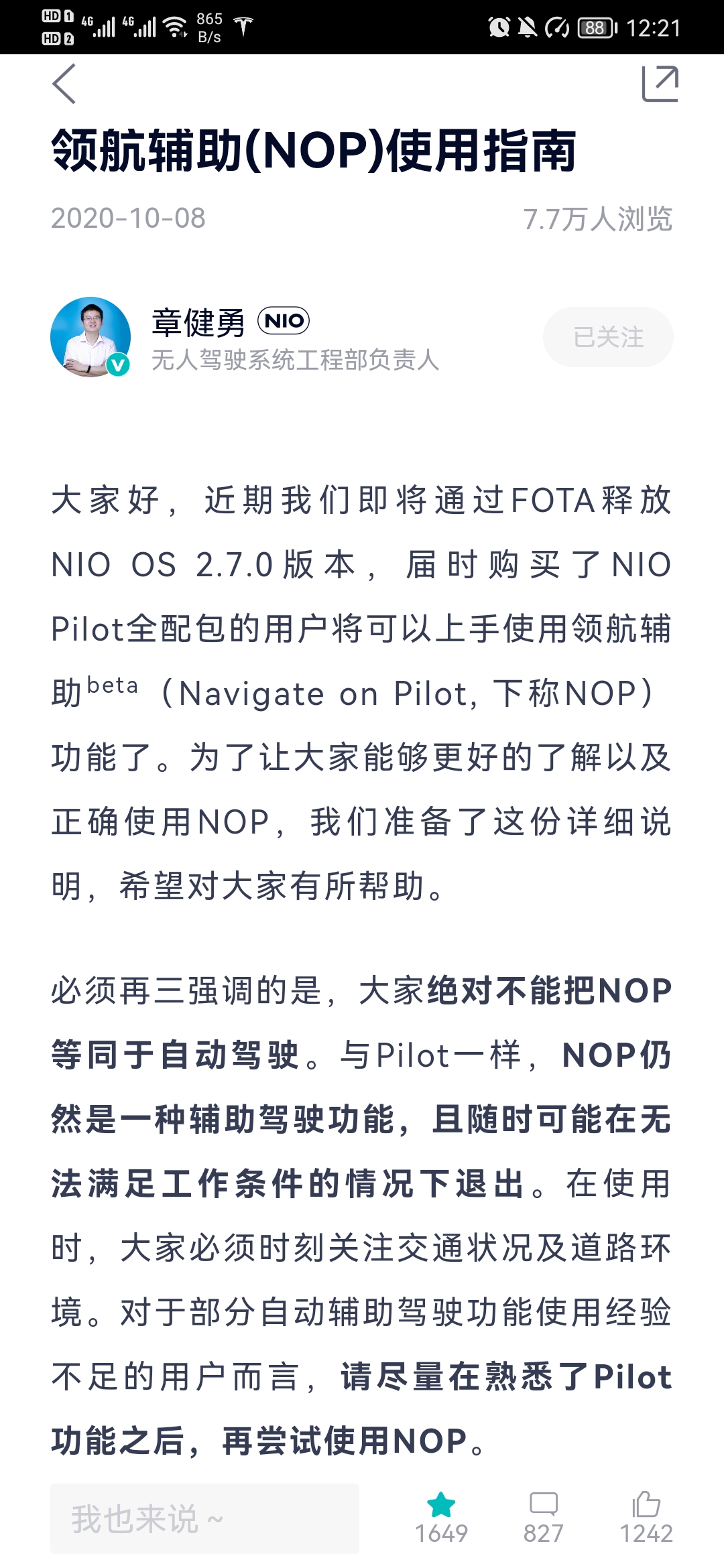
From the tweet, we can also see that NIO defined NOP as advanced driving assistance from the beginning, but similar promotional content about NOP’s advanced driving assistance capabilities is buried so deeply and so minimally in the NIO app that I feel NIO needs to reflect on why the popularization of advanced driving assistance system and safety-related content has not been given enough attention while pushing a large amount of corporate information to car owners.
In addition, the disclaimer clause that car owners do not usually encounter mentions that because the maximum deceleration is limited, NOP is defined as a comfort function rather than a collision prevention function.
So this is why I think that NIO has not done enough in terms of advanced driving assistance popularization and informing car owners, but this seems to be an industry problem.
Originating from information asymmetryOne time when I was communicating with some staff members of carmakers, they confidently mentioned that “In fact, our cars are already at the level of L3 or even L4, but regulations do not allow it, so we call it L2+.” Hearing such statements was really surprising, and it is imaginable how the dissemination to ordinary consumers would be like if even people from carmakers think so.
In another occasion, when I talked with a friend in the automotive industry about Tesla’s one-pedal mode, he said, “One pedal? There isn’t even a brake pedal, how do you drive?” It can be clearly perceived that even people in the same automotive industry often do not have the same understanding of a matter, let alone involving millions of ordinary consumers.
What is more frightening than advanced driver assistance is that everyone’s understanding of it varies. In 2013, Google invited a group of internal employees to participate in the testing of the autonomous driving system. At first, everyone was still focused on observing the road information, but shortly afterwards, one employee fell asleep in the car of the autonomous driving system, and some employees even put on makeup in the car. Former Waymo CEO John Krafcik immediately called off this test project and summed up by saying, “The better you develop this system, the easier it is for people to overly rely on it.“
This is consistent with what Huawei’s Su Qing said at the AI conference some time ago. He mentioned that “When users face new technology, they tend to initially distrust it completely, but after trying it out and feeling satisfied, they will completely trust it, and accidents often occur from this stage.“
And this problem will be the biggest challenge that advanced driver assistance will encounter in its development. How to keep users vigilant at all times during advanced driver assistance to reduce the accident rate is an issue that practitioners in the industry should face and solve.
I believe that in reducing the accident rate caused by advanced driver assistance at present, it should not rely on bloody incidents, but on the joint efforts of car companies, media, and practitioners in the industry. For example, XPeng has launched online teaching and examinations before using NGP, and Ideal Auto has also launched paper-based teaching materials.
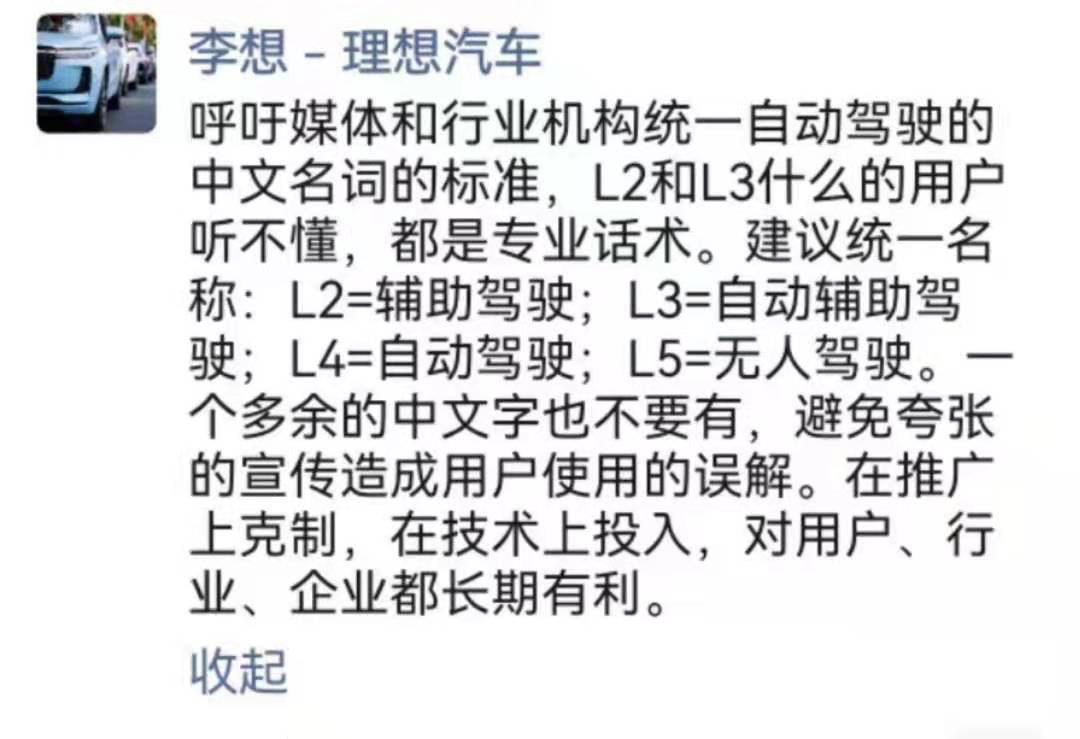 Apart from that, can we add an introduction specifically for customers who have selected auxiliary driving systems during the vehicle delivery process? In addition, an increasing number of automobile companies have their own dedicated apps. Could we periodically send users content on the principles, application scenarios, and safety guidelines of such driving assistance to help them better perceive auxiliary driving?
Apart from that, can we add an introduction specifically for customers who have selected auxiliary driving systems during the vehicle delivery process? In addition, an increasing number of automobile companies have their own dedicated apps. Could we periodically send users content on the principles, application scenarios, and safety guidelines of such driving assistance to help them better perceive auxiliary driving?
I have always believed that simply informing users of the risks of auxiliary driving or that the primary responsibility for driving lies with the individual alone cannot arouse their attention, and that the management of the company should not set a wrong example.
To make users aware of the boundaries of auxiliary driving capabilities, some simple principles must be clearly explained. For example, why is static obstacle recognition poor, why might it exit upon entering and exiting a tunnel, why will auxiliary driving exit once the lane is lost, etc. These are all scenarios that users often encounter but may not know the reasons for.
Any media’s influence is always limited and cannot cover all users. I believe that in this regard, automobile companies should bear the main responsibility for dissemination.
Conclusion
As the current auxiliary driving still has a lot of room for development, it is still imperfect. However, if used reasonably, it can indeed reduce the driving intensity for drivers, which is also a fact.
In the current situation of various information asymmetries in the industry, once accidents occur involving auxiliary driving, there will be a huge wave of criticism and questioning in public opinion. However, rather than completely negate auxiliary driving, we hope that everyone has the opportunity to comprehensively understand its capabilities and use this technology reasonably.
Because regardless of the scenario, the essence of any technology ultimately requires human operation, while concentrating on driving attention remains the first principle of safe driving.
This article is a translation by ChatGPT of a Chinese report from 42HOW. If you have any questions about it, please email bd@42how.com.
